Traveling through the tropics on a budget is not only possible but it can be life-changing. I’ve spent sun-soaked days island hopping, diving with marine life, and sipping coconuts on pristine beaches, all while sticking to a budget of around $50 per day.
Below, I share my personal journey through some of the best tropical destinations worldwide for water-based adventures. From popular backpacker hubs to hidden gems, each spot comes with budget-friendly lodging, cheap eats, thrilling water activities, and my hard-learned money-saving tips.
Koh Tao, Thailand

On tiny Koh Tao, I woke to gentle waves and swaying palms, ready for another day beneath the waves. This Thai island is world-famous for affordable diving – it’s where I earned my Open Water certification without draining my wallet.
In the mornings, I’d grab a Thai breakfast (sometimes a $2 pad Thai or a 50฿ bowl of noodle soup) and then hop on a longtail boat to snorkel hidden bays teeming with neon coral and reef fish. A full-day snorkeling tour around Koh Tao’s best bays cost only about 550 THB (~$16), including gear and lunch – an unbelievable value.
By afternoon, I often joined new friends for a “fun dive” – single-tank dives here go for roughly $20 each, among the cheapest in the world. We glided through schools of barracuda at sites like Twins and White Rock, and I even spotted a whale shark once at famous Sail Rock!
After a day in the water, evenings meant relaxing on the sand at Sairee Beach, enjoying a beachfront BBQ fish dinner for 100–150฿ ($3–5) and a chilled Chang beer under the stars.
I bunked at a simple hostel dorm by the beach for about ฿300/night (~$9), falling asleep to the sound of lapping waves and laughter from nearby reggae bars.
- Budget Lodging: Hostel dorm beds from ฿300–฿350 ($9–$11) per night are common. Many dive shops offer discounted accommodation if you dive with them – I snagged a dorm bed as part of my dive course package.
- Meals: Mouthwatering Thai street food is everywhere. Dishes like pad thai or green curry go for ฿60–฿100 ($2–$3), and fresh fruit shakes cost around 40฿ ($1+). Eating at local night markets kept my food budget under $10 per day.
- Water Activities: Fun dives cost about ฿600–฿700 each (~$18–$20) (even less per dive if buying a package). A full-day group snorkel tour to Koh Nang Yuan and other bays was ~฿550 ($16), including lunch. You can also rent a kayak for a few dollars to explore the coastline.
- Money-Saving Tip: Walk or rent a scooter (฿200/day) to get around – taxis are pricey on Koh Tao. Also, travel in April-June (shoulder season) when dive schools and hostels often offer deals. I saved by doing my Open Water course here for around $320 total (which even included accommodation) – one of the cheapest places globally to get dive certified.
Utila, Honduras

Arriving on Utila, I felt time slow to the island’s easygoing rhythm. This little Caribbean gem in Honduras is all about diving. Every morning, I’d wander barefoot to a dockside dive center as the sun rose. By 9 a.m., I’d be backrolling off a boat into warm, clear water above the Mesoamerican Reef.
A two-tank dive day here costs roughly $50 ($25 per dive), and many shops even throw in free dorm lodging if you dive with them (which I happily accepted).
Between dives, I chatted with fellow backpackers over baleadas – thick Honduran tortillas stuffed with beans and eggs, a steal at just L.30–40 ($1–$1.50) each from street stands.
Utila’s underwater world blew me away. I hovered over vibrant coral gardens at CJ’s Drop Off and spotted eagle rays and sea turtles gliding by. The island is famous for cheap PADI courses (Open Water for about $330).
I’d already certified in Thailand, but many travelers here were earning their dive cards with big smiles and small price tags. On lucky days, Utila’s dive sites even treat you to whale shark sightings – it’s one of the few places budget divers have a chance to see these gentle giants.
Back on land, the vibe is rustic and friendly. Nights often meant gathering at Tranquila Bar or Coco Loco for a sunset drink (utilizing the 2-for-1 happy hours to keep it cheap).
My hostel, a simple family-run guesthouse, cost about $12/night for a fan room – not fancy, but it came with hammocks and instant camaraderie. On the porch, we’d swap dive stories and tips on saving money (like which shop had the $1 baleada specials). Before long, Utila felt like a community of ocean lovers all encouraging each other to “Stay for one more dive.”
- Budget Lodging: Utila has a thriving dive culture, and many dive shops offer free or discounted accommodation if you book a course or a package of fun dives. Otherwise, dorm beds and budget rooms run about $10–$15 per night. (I paid $11/night for a hostel in town, which was basic but had everything I needed).
- Meals: Street-food baleadas (stuffed tortillas) for $1–$2 are a filling staple. Local eateries serve dinners like coconut curry fish or fried plantains for $4–$6. By eating where locals do – think simple BBQ shacks – I kept daily food costs around $10–$12.
- Water Activities: Fun dives are typically $25 each (with gear). PADI Open Water courses go for about $330 (often including lodging). Snorkeling off Coral View or Blue Bayou is free (bring your own mask or rent one for a couple of dollars). Some hostels even lend out snorkel gear.
- Money-Saving Tip: Buddy up to bargain. I teamed up with other backpackers to negotiate group rates on dives and tours – dive shops on Utila are competitive and often gave us a discount or free extras for booking together. Also, travel in the off-peak months (Oct–Nov) when dive shops may offer lower prices or packages to attract customers.
Perhentian Islands, Malaysia
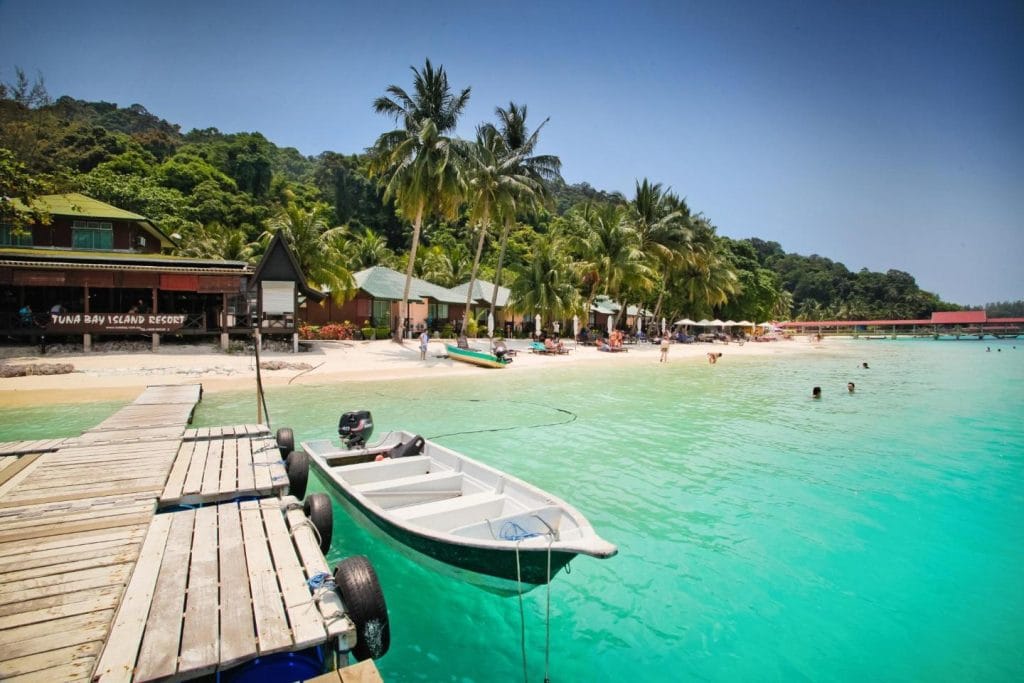
The Perhentian Islands feel like a secret you’re excited to share. Reaching these two small islands off Malaysia’s east coast, I found no roads, few worries, and a world of turquoise water at my feet.
I based myself on Perhentian Kecil (Small Island), where backpackers and locals mingle. My beach chalet was a simple wooden hut with a fan, just steps from the sand on Long Beach – and it cost only RM50 (~$11) per night for a shared room, one of the cheaper options available.
Waking up to the sound of gentle waves, I’d grab roti canai (flaky bread with curry) for breakfast at a beach café for RM5 (about $1) and plan my day of aquatic adventure.
Snorkeling here is as easy as wading in from the shore. One lazy afternoon, I swam off Coral Bay with my own mask and within minutes was floating over baby sharks and rainbow reef fish in water clear as glass. For more variety, I joined a half-day snorkeling trip (costing just RM40, about $9) that whisked us to five different spots around both islands.
I couldn’t contain my grin as I spotted sea turtles grazing on seagrass at Turtle Point and dozens of harmless reef sharks at Shark Point – all for less than the price of a restaurant meal back home.
When I craved diving, the Perhentians delivered cheaply too. The islands are known as one of Southeast Asia’s best (and most affordable) places to learn scuba. Fun dives ran around RM90 ($20) each, but shops offered package deals – some divers I met were getting certified for under $300 total.
I’ll never forget descending at Tokong Laut (Temple of the Sea) and finding myself amid swirling schools of jackfish and curious trevally.
After such thrills, evenings were wonderfully low-key: watching the sunset with newfound friends, feasting on a grilled fish BBQ (around RM25, or $5 for a heaping plate of fish, rice, and salad), and walking back under a sky full of stars (electricity is limited, making the stars shine bright).
- Budget Lodging: On Perhentian Kecil, the cheapest beachfront chalets or hostel rooms start around €10–15 (RM50–75) a night – expect cold-water showers and maybe just a fan, but you’ll be right by the beach. (Rooms on the bigger island, Besar, cost a bit more, ~€25+).
- Meals: Local food is tasty and affordable. A plate of nasi goreng (fried rice) or a noodle dish costs RM8–15 ($2–$4) at simple cafes. I often ate at beach shacks serving fresh curry or fried squid for under $5. Western food is pricier, so sticking to local dishes kept my daily food spend around $8–$10.
- Water Activities: Snorkeling is the Perhentians’ highlight – a half-day group snorkel tour with gear was only RM30–40 ($7–$9), and it covered multiple reefs (with lunch included). Snorkel gear alone rents for mere RM5–10 ($1–$2) if you go solo. Scuba diving is also a bargain: fun dives about RM90–120 each (~$20-25), and Open Water certification around RM1,300–1,500 (≈ $280–320). With multiple dives the cost per dive drops, and some dive centers give free dorm beds to divers.
- Money-Saving Tip: Bring cash and some supplies. There are no ATMs on the islands and basics like sunscreen or snacks are marked up. I stocked up on essentials (sunblock, mosquito repellent, snacks) on the mainland to avoid steep prices on the Perhentians. Also, consider visiting in June or September (shoulder season) – I went in October just as the monsoon was approaching, and not only were accommodations about 20% cheaper, but we practically had beaches to ourselves.
Zanzibar, Tanzania
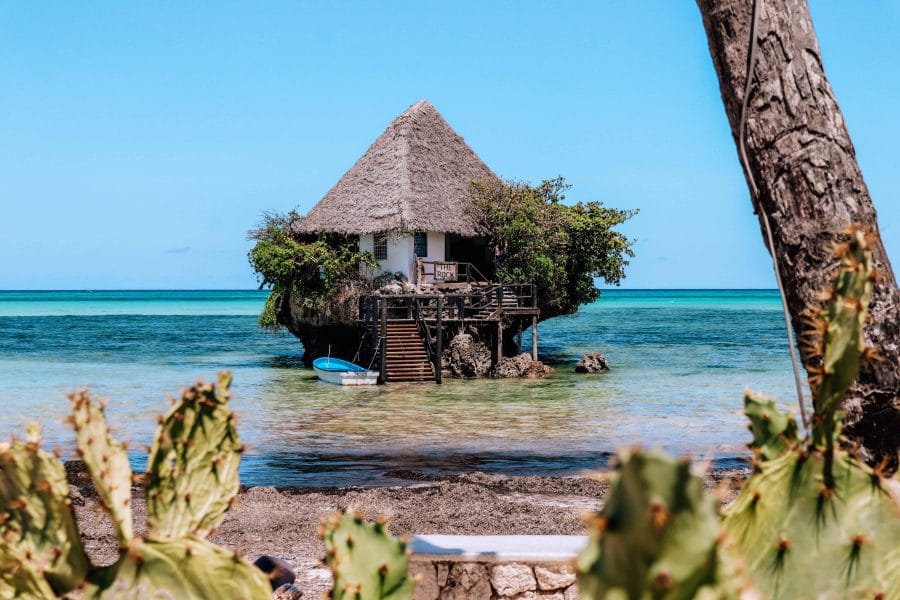
Stepping onto Zanzibar felt like entering a dream of East African paradise and culture combined. I split my stay between historic Stone Town and a thatched beach hut on the east coast.
In Stone Town’s maze of alleys, I found a friendly hostel for only $11 a night – complete with a curtain-draped bed and included breakfast of chapati and fruit. By day I’d wander past spice markets and centuries-old doors, then cool off with a quick dip in the ocean at Forodhani seafront.
Every evening, the Forodhani Gardens night market came alive, and I feasted on Zanzibar pizza – a bizarre and delicious stuffed pancake – for just $2. Fresh sugarcane juice (50 cents) in hand, I watched dhows sail by in the golden light.
Craving the full tropical experience, I headed to Paje Beach on the east coast, famed for its endless sand and lagoon-like shallows. My beach bungalow, steps from palm trees and teal water, cost about $20 (I shared it with a fellow traveler to keep it $10 each).
The splurge here was a snorkeling trip to Mnemba Atoll, one of Zanzibar’s top marine spots. Haggling with local boatmen at Paje, a small group of us secured a half-day snorkel trip for $40 each – a deal compared to big tour operators. The experience was pure magic: we swam in an aquarium of tropical fish over neon corals, and our guide even pointed out a graceful green sea turtle gliding by.
Back on land, I embraced Zanzibar’s “Pole Pole” (slowly slowly) lifestyle. One afternoon I joined a local dhow (sailing boat) sunset cruise off Nungwi – negotiating directly on the beach got me a spot for $15 (with cold drinks and reggae music on board).
As the sun dipped below the Indian Ocean, painting the sky tangerine, I couldn’t believe this luxury cost so little. For dinner, I savored Swahili curry at a small village eatery for under 10,000 TZS ($4), and at night I slept with a fan blowing the scent of sea breeze through my room.
Zanzibar taught me that even in a place known for honeymoon resorts, a shoestring traveler can find five-star experiences for $50 a day.
- Budget Lodging: In Stone Town, dorm beds or basic guesthouse rooms go for $10–$15 per night. Along the beaches (Paje, Nungwi, Jambiani), locally-run guesthouses offer simple private rooms or bungalows around $20–$30 (often less if sharing). I booked a bungalow on Jambiani beach for $18 via a local contact.
- Meals: Street food and local cafes are delicious and cheap. Fill up on Zanzibar pizzas, samosas, and grilled skewers at night markets for $2–$5. Local restaurants serve coconut fish curry or biryani for $5–$8 a plate (generous portions). By eating at family-run places and enjoying fruit from markets (sweet mangoes for pennies), I kept food costs around $10/day. (Stone Town’s street food scene is especially great for budget eats).
- Water Activities: Snorkeling trips to hotspots like Mnemba Atoll or Nakupenda sandbar typically range $40–$60 per person, including gear. Always haggle – we got a Mnemba trip for $40 by finding other travelers to join. Scuba dives off Zanzibar run about $40–$50 per tank, but if that’s too steep, the snorkeling is fantastic and much cheaper. A local dhow sunset cruise can be found for $15–$20 if you arrange on the spot (versus $30+ through hotels).
- Money-Saving Tip: Use local transport and guides. I saved a bundle by riding the “dala-dala” minibuses (just $1–$2 a ride across the island) instead of taxis ($30+), and by booking tours face-to-face with community guides rather than online. Also, traveling in shoulder season (March-May or Nov) can halve accommodation prices. I went in Ramadan – fewer tourists meant I could bargain better and enjoy a more authentic vibe.
El Nido, Philippines
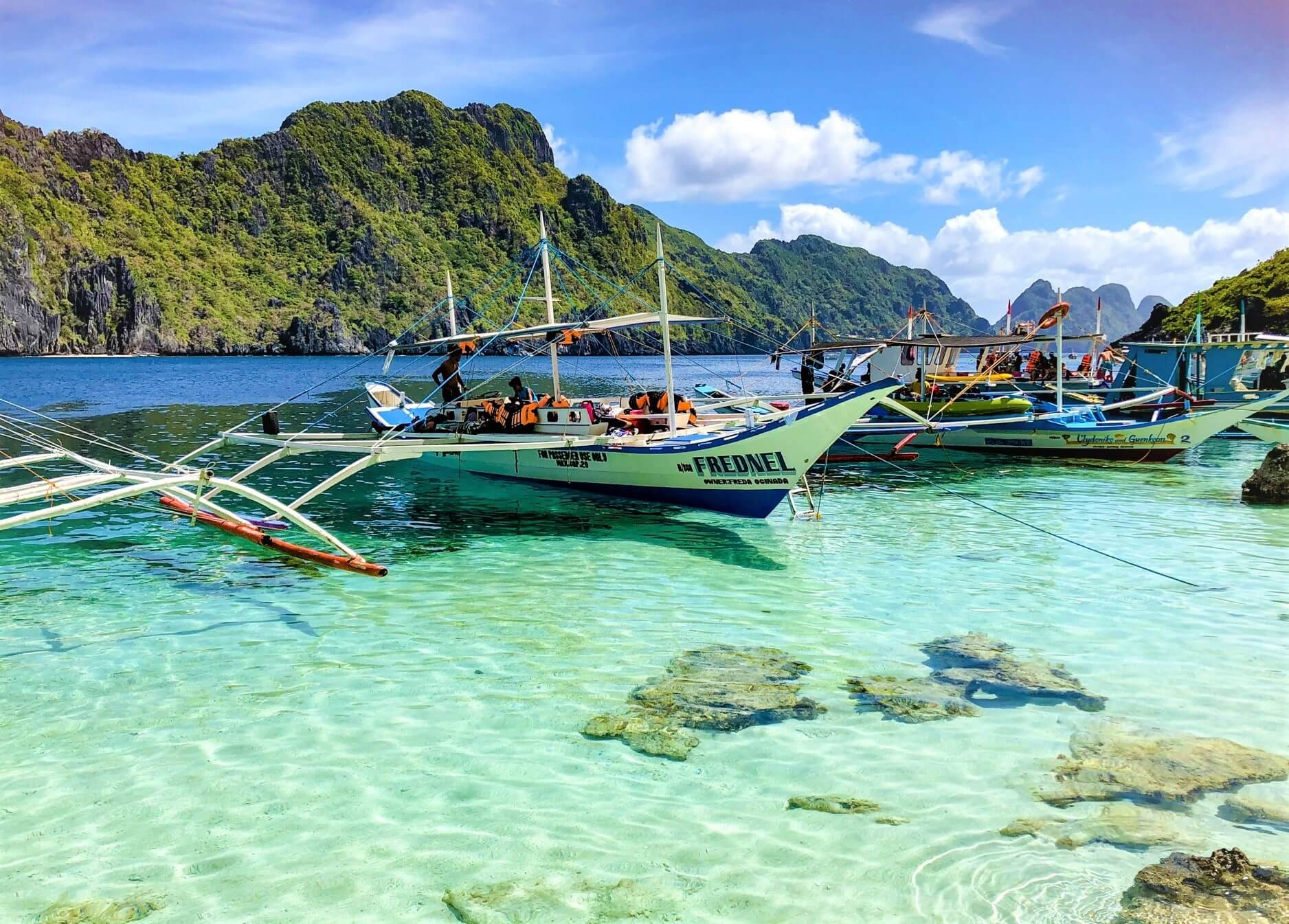
In El Nido, Palawan, I felt like I’d jumped into a travel magazine photo – jagged limestone cliffs, powdery beaches, and water in fifty shades of blue.
It’s a destination on many bucket lists, yet I managed to pull it off on a backpacker budget. I checked into a hostel a few blocks from the beach, where a bunk in an air-conditioned dorm cost me only ₱400 (~$8) a night.
Every morning, I’d wake to the sound of roosters and revving tricycles, eager for that day’s island-hopping adventure.
El Nido is famed for its boat tours (A, B, C, or D) that whisk you to idyllic islands and secret lagoons. I opted for Tour A first – a full day visiting four locations including the breathtaking Big Lagoon and Secret Lagoon. The price? Just ₱1400 (about $25) including lunch.
We spent hours snorkeling vibrant coral reefs and lazing on hidden beaches. The crew grilled up a feast of fish, pork, and tropical fruit for us on the sand – all part of the package. Floating in the turquoise waters of Seven Commandos Beach, I had to pinch myself that this was “budget travel.”
To save even more, I teamed up with friends from the hostel on another day to rent our own boat. By splitting the cost, we each paid about $18 and got a private custom tour – our boatman took us to less-visited spots where we had reefs all to ourselves.
Back in town, cheap eats were plentiful. I’d grab local BBQ skewers and rice for ₱100 ($2) or a heaping plate of chicken adobo with a calamansi juice for under $3 at carinderias (small eateries). One night, I splurged on a fresh grilled fish at a beachside shack – even that was only $6 and came with a front-row sunset view.
Despite El Nido’s growing popularity, I found ways to keep costs down. I walked everywhere (the town is small), rented a scooter for a day at ₱500 ($9) to reach the stunning Nacpan Beach on my own, and brought a reusable water bottle to refill (many hostels offer free drinking water).
The memories of kayaking in Big Lagoon’s emerald waters and star-gazing on the hostel rooftop still feel as rich as any luxury trip – proof that you can do Palawan’s paradise on $50 a day.
- Budget Lodging: El Nido offers plenty of hostels and budget inns. A bed in a hostel dorm ranges $7–$12. I found a basic private fan room for ₱800 ($14) by walking in. Booking a bit in advance can snag great deals – one popular hostel was ₱500 for a dorm bed including free breakfast and Wi-Fi.
- Meals: Local Filipino meals are very budget-friendly in El Nido. An order of chicken adobo with rice or pancit noodles is about ₱150–₱200 ($3–$4) at a simple eatery. Street food snacks (grilled chicken skewers, balut, etc.) are ₱20–₱50. Western food and pizzas will cost more, so I stuck mostly to local fare and spent roughly ₱500 ($9) per day on food. (Plus, the island-hopping tours include a big buffet lunch – one less meal to buy each tour day.)
- Water Activities: Group island-hopping tours (A, B, C or D) cost between ₱1200–₱1400 ($22–$26) each, all-inclusive of lunch, snorkel gear, and fees. These tours are the highlight and absolutely worth it. If you bring your own snorkel set (which I did after renting once for ₱150), you can also snorkel off public beaches for free – Las Cabanas Beach had decent coral and fish near shore. Kayak rentals in the Big or Small Lagoon (if you go by yourself) are about ₱250 ($5) an hour. Diving is available too (fun dives ~$30), but I skipped it as the boat trips kept me plenty satisfied.
- Money-Saving Tip: DIY what you can. I saved money by taking a public van from Puerto Princesa to El Nido for ₱600 ($11) instead of a pricier private transfer. In town, I refilled water for free at tour offices (to avoid buying bottles) and found that booking tours directly with boat operators on the beach in the morning sometimes got me last-minute discounts (they’d rather fill the boat). Also, travel in June or late November – it’s slightly off-season, so I scored lower rates on accommodation and smaller tour groups while still getting mostly good weather.
Little Corn Island, Nicaragua
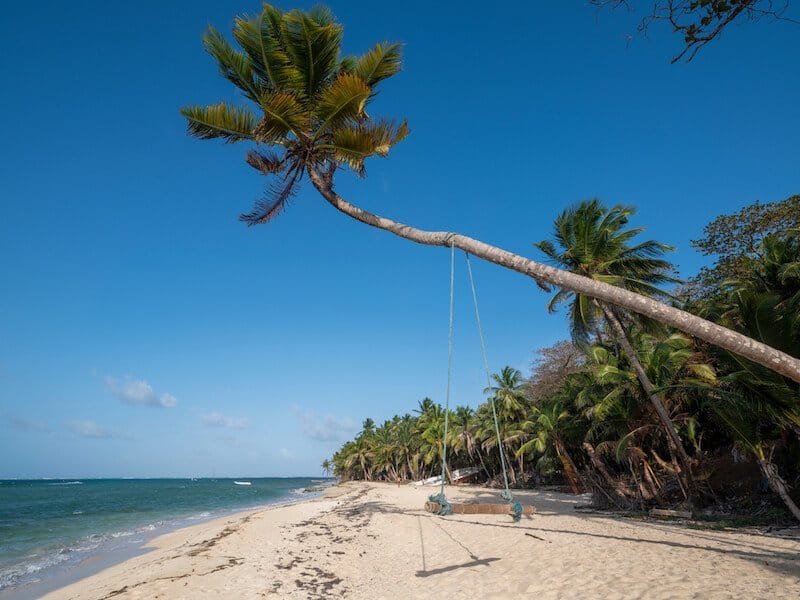
Imagine a tropical island with no cars, no roads, and no worries – that’s Little Corn Island in the Caribbean Sea off Nicaragua. Reaching Little Corn is an adventure in itself (a bumpy ferry, a tiny plane, and finally a small open boat), but once I arrived, I knew it was worth it.
I fell asleep and woke up to the sound of the ocean every day. My cabana at a local guesthouse had a porch hammock and cost a grand total of $12 per night (split with a friend, it was only $6 each!). Electricity was limited to a few hours in the evening, giving nights a romantic lantern-lit vibe.
Life on Little Corn is delightfully simple: by day, I’d snorkel straight off the beach or follow jungle paths to hidden coves; by night, everyone gathered in the village for fresh seafood and reggae beats. With no motorized transport, I walked barefoot everywhere in 15 minutes.
I found an amazing snorkel spot off Otto Beach – just a 200m swim out through a gap in the reef, and suddenly I was surrounded by barracuda, stingrays, and colorful reef fish, all for free!
One morning, I joined a local fisherman named Alfonso on a snorkel-fishing trip – for $20 each, he took a small group of us to his secret reef spots, where we snorkeled alongside him as he speared lobsters for the evening’s dinner. The water was so clear I could see the starfish dotting the sand 30 feet below.
Food on the island was both a treat and a way to save money. I often started the day at Tranquilo Café with a $1 cup of local coffee and a hearty island breakfast for $4–$5 (like coconut bread with eggs and fruit).
For lunch, I’d buy a street snack like coconut Johnny cakes or meat pies for under $2. Dinners were communal and lively – one night I attended a beach BBQ where $10 got me a huge plate of grilled fish, rice, and plantains plus a cup of the local rum. On other nights, the hostel kitchen was free to use, and some travelers cooked up pasta or the fish we’d caught.
Money-saving island hacks: I discovered you can pick your own coconuts and mangos for free – locals didn’t mind as long as you asked politely. So I’d crack a coconut for an instant refreshing drink instead of buying one.
The island’s simplicity forced me to slow down and enjoy nature’s free offerings: sunsets, bioluminescent plankton glowing in the water at night, and good company. Little Corn proved that even a remote Caribbean paradise can be done on $50 a day – and those days remain some of my happiest travel memories.
- Budget Lodging: Little Corn has a handful of small guesthouses. I stayed at Three Brothers, a popular budget hotel, for $12 a night (double room) – only $6 per person with a roommate! Rustic cabanas or hostel dorm spots (when available) can be as low as $10. Expect cold water showers and maybe occasional power outages – it’s all part of the charm.
- Meals: Groceries are pricier on the island (everything comes by boat), but local eats are still cheap. I often ate street-food style: coconut bread from Ester’s bakery for $1, a couple of freshly fried empanadas for $2, or a plate of the day’s catch with rice and beans at a family eatery for C$150 ($4). By buying some fruit and basic supplies on the mainland (I spent $15 on a week’s staples and carried them over), I could cook occasionally and keep daily food costs around $8–$10.
- Water Activities: The best snorkeling is free – just swim off the beaches (Otto Beach and Yamaya Beach were my favorites). Snorkel gear rental on the island is about $5/day, or many guesthouses lend masks if you ask. Guided snorkel trips or fishing+snorkeling combos with locals run $15–$25 (far cheaper than formal tour companies). Scuba diving is an option too: fun dives were about $35 each, and some shops give discounts if you stay at their affiliated guesthouse (e.g., Dolphin Dive offered a small discount if I bunked in their dorm). I did one night dive for $45 and witnessed mind-blowing bioluminescence – worth every penny.
- Money-Saving Tip: Bring cash and be ready to unplug. There are no ATMs on Little Corn, so withdraw enough Nicaraguan Córdoba or US dollars before you come. By avoiding the costly flight and taking the ferry+boat route (which is ~$60 round-trip vs. ~$180 flight), I saved a lot. Also, negotiation is friendly practice here – I politely bargained on my room rate and got a slight discount for a longer stay, and some locals gave me better prices on excursions when paid in cash. Most importantly, embrace the slow pace: entertainment on Little Corn is mostly free – think beach bonfires, volleyball games, or simply swinging in a hammock with a good book.
Caye Caulker, Belize
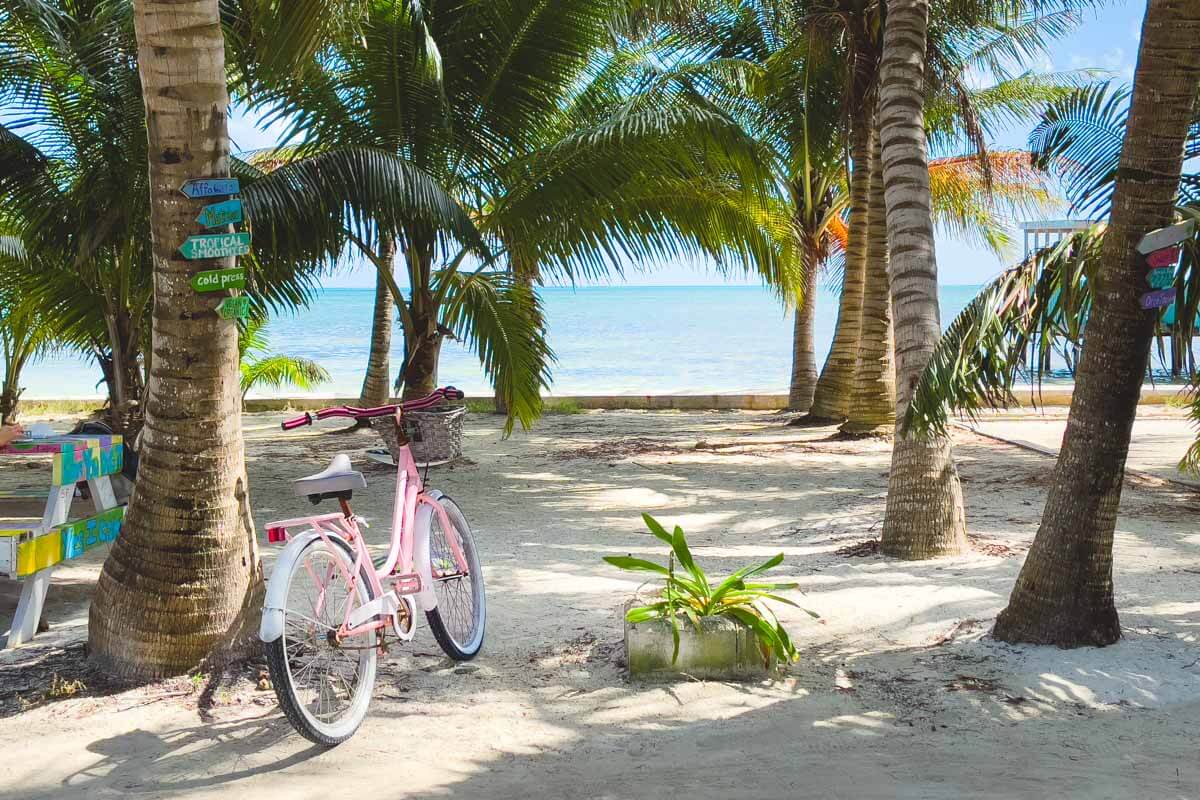
Caye Caulker’s motto is literally “Go Slow,” and when I landed on this petite Belizean island, I quickly understood why.
There are no cars, only golf carts and bicycles coasting on sand roads lined with colorful wooden houses. I found a hostel in the village for $15 a night, a bit above my usual, but it came with a breezy rooftop and free pancakes each morning – a fair trade in my book.
My days here fell into an easy rhythm: wake with the sun, stroll to the Split (the famous swimming spot where the island is cut in two), snorkel or swim until hungry, then feast on lobster.
Yes, lobster – Caye Caulker is one of those rare budget spots where lobster is affordable when in season. I visited during Lobsterfest and could get a grilled lobster tail with rice and beans for BZ$20 (USD $10) at a street stall. On other days, I’d grab stewed chicken lunches for just $4–$5.
One afternoon, I rented a kayak for BZ$15 (~$7) an hour to paddle among mangroves, and was rewarded with sightings of starfish and even a manatee coming up for air nearby (an absolute thrill!).
The highlight was, of course, snorkeling the Belize Barrier Reef. I splurged on a full-day snorkeling tour to Hol Chan Marine Reserve and Shark Ray Alley at BZ$150 (USD $75), which is pricey – but it included gear, guides, park fees, a beach BBQ lunch, and six incredible stops. Swimming amid swarms of nurse sharks and stingrays in the wild (they glide right past you – totally harmless) had my heart racing with joy.
We also drifted over vibrant coral gardens and spotted a gentle manatee grazing on seagrass. To stretch my budget, I chose that one big tour and kept the rest of my activities cheap or free. For instance, many days I just snorkeled around the Split for free, where I saw plenty of fish and even spotted an eagle ray on a calm morning.
As sunset approached, everyone on Caye Caulker seemed to gather by the western shore. We’d sip $2 Belizean rum punches and watch the sky turn cotton-candy pink.
I remember joining a beach bonfire one night under the coconut trees, sharing travel stories with people from around the world. Despite being a laid-back place, Caye Caulker offered no shortage of rich experiences – and I savored them slowly, just as the island asked me to.
- Budget Lodging: Dorm beds on Caye Caulker start around BZ$30 (~$15 USD) per night for a decent hostel (with fan and common kitchen). Private rooms in guesthouses can be found for $25–$40 if you scout around or go slightly off the main drag. I bunked in a 6-bed dorm with A/C for about $18, but it included breakfast which offset the cost.
- Meals: Eating local is key. A typical Belizean rice-and-beans lunch with chicken is BZ$8–$10 ($4–$5), and you can get fresh catches like snapper or lobster (in season) at the Cooperativa stands for under $10. Street vendors sell meat pies, tacos, and empanadas for BZ$2–$3 each – perfect cheap snacks. I also frequented a smoothie stand for a huge cup of tropical fruit smoothie at BZ$5. My daily food budget here was about $15, and I was stuffed.
- Water Activities: Snorkel tours vary in price. Half-day trips (e.g., to the closer reef or Coral Gardens) can be found for around BZ$80 ($40), while full-day tours to the famous sites (Hol Chan, Shark Ray Alley) cost BZ$150–$190 ($75–$95). I recommend at least the half-day Hol Chan tour if the full day is too much – it’s world-class snorkeling. You can also rent snorkel gear for about BZ$20/day and explore near the Split on your own. Diving trips (2-tank) run about $80–$100, more if going to the Blue Hole. I saved money by sticking to snorkeling, which was phenomenal and much cheaper.
- Money-Saving Tip: Go slow – literally. Caye Caulker is best enjoyed without a strict agenda, which naturally limits spending. I often biked around (rental ~BZ$15/day) or just swam off free docks. Also, consider staying longer – many hostels give a night free if you stay a week. By lingering, I got to know a local tour guide who then offered me a last-minute spot on a snorkel trip at a discount. And if you’re heading to other spots in Belize, book shuttles or ferries locally – I saved by buying my ferry to Caye Caulker on-site (BZ$25) rather than online.
In conclusion, traveling through tropical havens on a $50 daily budget is not only doable, it’s immensely rewarding. Each destination above taught me that rich experiences don’t require riches – just an open mind, a willingness to live simply, and the courage to dive in (sometimes literally!). In fact, the constraints often led me to more authentic adventures and friendships.

